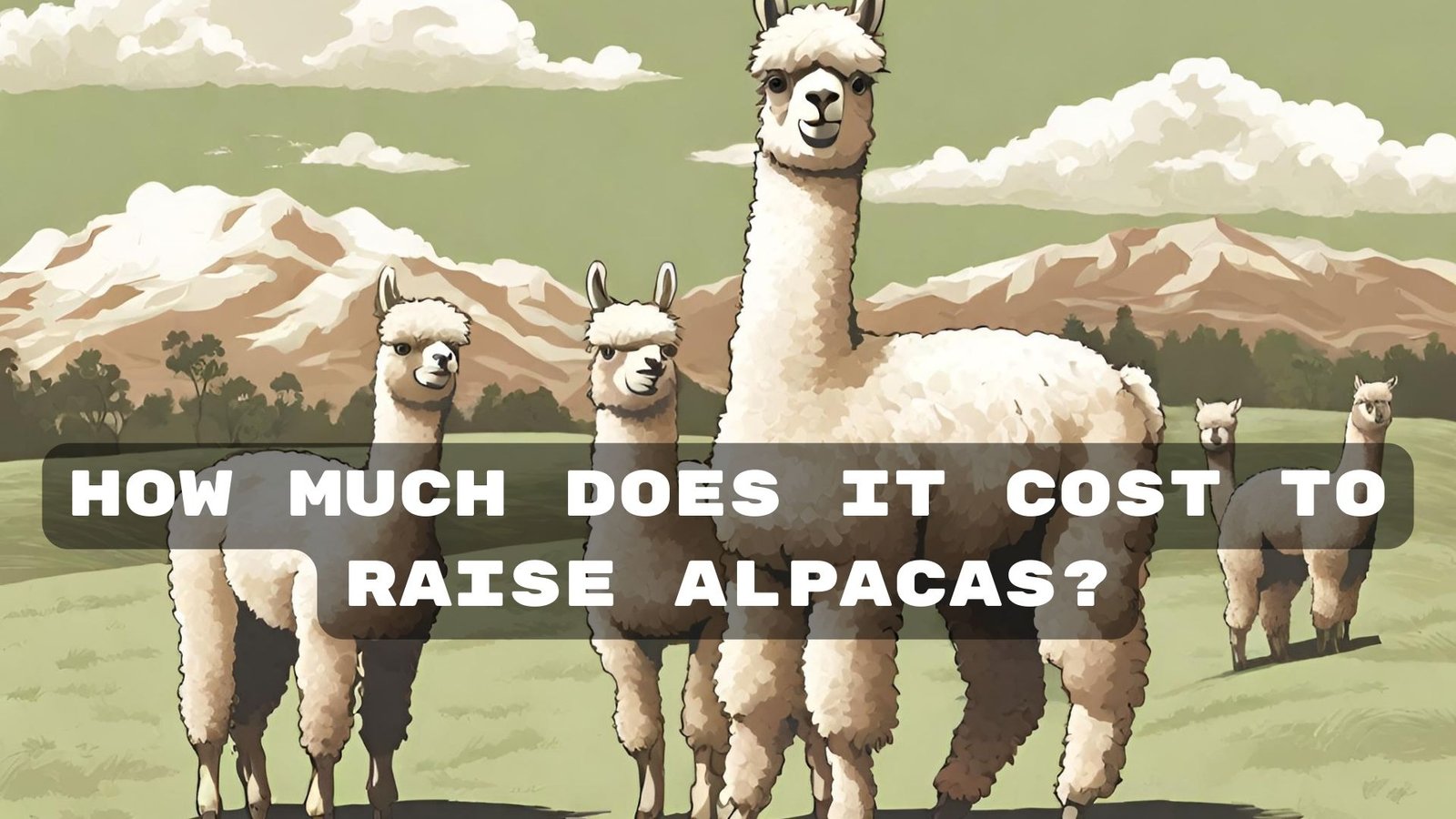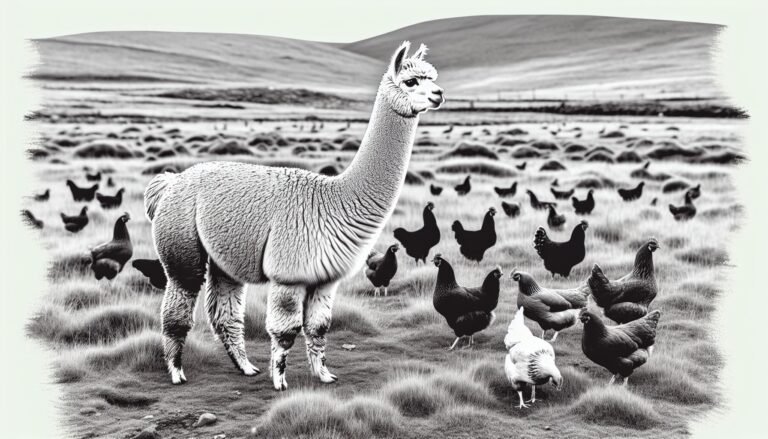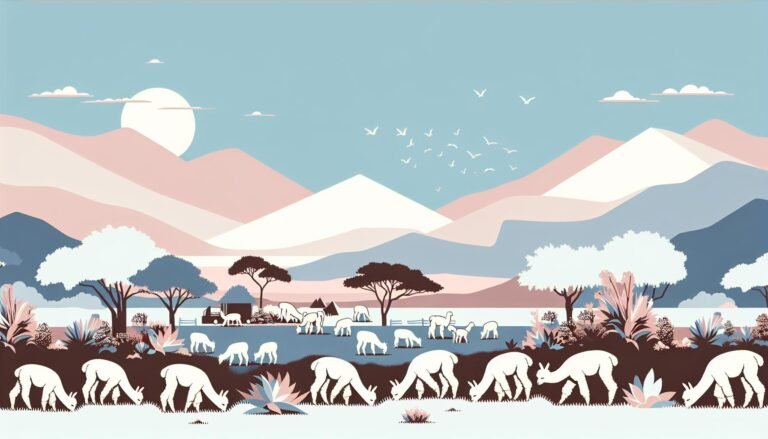How Much Does It Cost to Raise Alpacas
Raising alpacas has become a popular agricultural endeavor, offering a unique blend of lifestyle and entrepreneurial opportunities. The alpaca farming industry has evolved substantially in recent decades, moving from speculative investment highs to more grounded business models. Potential alpaca farmers need to consider the various financial aspects involved in starting and maintaining an alpaca farm. Costs can range significantly depending on factors such as the quality of the alpacas, the land on which they are raised, and the goals of the breeding program.

Key Takeaways
- Investment and maintenance costs for alpaca farming are influenced by the quality and goals of the breeding program.
- Shelter, fencing, and daily care are essential components of alpaca welfare that contribute to overall expenses.
- Operational costs such as equipment and fiber processing are important factors in the sustainability of an alpaca farm.
The initial investment in alpaca farming includes the purchase price of the animals, which can vary widely based on the animal’s genetics, fleece quality, and show record. Shelter and fencing need to meet the specific needs of these animals to ensure their safety and well-being. Ongoing expenses also include daily care needs such as feed, veterinary care, shearing, and farm labor. Alpaca owners should also consider the operational costs associated with running a farm, including equipment, utilities, insurance, and processing of alpaca fiber, which may contribute to the farm’s revenue stream.
Initial Investment Costs
The initial investment costs of raising alpacas can be substantial, encompassing the purchase of the animals, land acquisition and preparation, shelter construction, and genetic investment for breeding stock.
Purchasing Alpacas
The price of alpacas varies widely, with individual animals costing between $250 and $50,000, largely depending on factors such as age, fiber quality, and lineage. Most buyers, however, will likely encounter prices in the range of $3,000 to $10,000 for an alpaca that suits their needs.
Land and Fencing
Alpacas require sufficient space for grazing and exercise, with land costs contingent on location and size. Fencing is critical for the safety of the alpacas and can include options from simple barbed wire to more secure, predator-proof structures. These initial land and fencing expenses are critical to establish a secure environment for the alpacas to thrive.
Shelter and Barn
Although alpacas are well-adapted to a variety of climates, they do require protection from extreme weather. Investment in a shelter or barn ensures their wellbeing, with costs varying based on materials, size, and whether one opts for a simple three-sided structure or a fully equipped barn.
Breeding Stock and Genetics
For those looking to operate a breeding farm, the initial investment goes beyond purchasing average alpacas. High-quality breeding stock comes with a premium, influenced by genetics and heritage, as noted by Informed Farmers. This investment can impact the farm’s long-term viability and success in producing superior offsprings.
Each of these sections represents an important facet of the initial investment costs and should be considered carefully when planning to enter the field of alpaca farming.
Daily Care Expenses

Raising alpacas involves several ongoing expenses that are vital for their daily care. These expenses are primarily attributed to feeding, healthcare, and shearing, which are essential to maintain a healthy and productive alpaca herd.
Feeding
Alpacas primarily feed on grass and hay, and the cost of their diet can vary depending on location and availability. On average, an alpaca might consume between 1.5% and 2% of its body weight in hay per day. Specialty feeds and supplements can add to the costs. For instance, owners should expect to pay for:
- Grass/Hay: Essential daily feed; costs fluctuate based on local hay prices.
- Supplements: Used to enhance the alpacas’ diet; averages to a minor expense.
Healthcare and Veterinary Services
Routine healthcare is crucial to prevent disease and maintain herd welfare. The costs typically cover:
- Routine check-ups: Annual or bi-annual veterinary visits.
- Vaccinations/Parasite Control: Necessary for preventing common alpaca ailments.
Unexpected medical needs can also arise, requiring emergency veterinary care, which can significantly increase healthcare expenses.
Shearing
Alpacas require annual shearing to stay healthy and comfortable, especially in warmer climates. Shearing costs may include:
- Professional Shearer: Fees vary based on region and the shearer’s expertise.
- Equipment: If purchasing shearing equipment for personal use, it involves an initial investment plus maintenance costs.
This table summarizes the potential range of daily care expenses for alpacas:
| Expense Category | Potential Cost Range |
|---|---|
| Feeding | Varies with market |
| Healthcare | Predictable, with additional costs for emergencies |
| Shearing | Yearly expense based on shearer and equipment |
It’s important for potential alpaca owners to consider these costs as part of their financial planning for raising alpacas.
Operational Costs

Raising alpacas involves various operational costs that affect the overall economics of the venture. These costs must be anticipated for effective financial planning.
Insurance
Farmers should secure insurance to protect their investment in alpacas. This may range from basic liability coverage to comprehensive plans that include vet care and mortality. The exact premium will depend on the value of the alpaca herd and the coverage options selected.
Utilities and Maintenance
Operational costs also involve utilities and maintenance for the alpaca farm. This includes water for hydration, cleaning, and irrigation, as well as electricity, which powers shearing equipment, lighting, and heating systems in colder climates. Regular maintenance of fences, barns, and other farm structures helps ensure the safety and well-being of the alpaca herd.
Labor
Farm labor remains a significant portion of the operational costs. This may involve daily feeding, shearing, reproduction management, and healthcare. Although some smaller operations manage with family labor, larger farms often hire staff. Compensation varies widely but reflects the skill and labor intensity required for alpaca care.
Marketing and Sales

In the context of raising alpacas, an effective marketing and sales strategy is essential to ensure profitability. Owners must navigate the unique aspects of advertising, product development, and establishing sales channels tailored to their alpaca business.
Advertising
Target Market Identification: Owners must identify their target market to tailor their advertising strategies. This might involve focusing on the luxurious nature of alpaca fiber for customers interested in high-end textiles or emphasizing the eco-friendly and hypoallergenic aspects of alpaca products for health-conscious individuals.
Advertising Venues: Selecting appropriate advertising venues is crucial. Alpaca owners often benefit from online marketing through social media or specialized agricultural platforms. Attendance at farmers’ markets or craft fairs can also be a direct way to engage with potential customers.
Product Development
Product Quality and Innovation: Alpaca farmers should focus on the development of products that highlight the unique qualities of alpaca fiber, like its softness and thermal properties. Diversifying product offerings, from raw fleece to finished goods like yarn or clothing products, can cater to a wider customer base.
Customer Feedback and Adaptation: Utilizing customer feedback to improve and adapt products ensures that the business remains relevant and competitive within the market. Trends change, and keeping a keen eye on consumer preferences can lead to the development of more desirable products.
Sales Channels
Direct Sales: Many alpaca farmers utilize direct sales through on-farm stores or their own websites, maximizing profit margins by cutting out the middleman.
Wholesale/Retail Partnerships: Establishing relationships with wholesale or retail outlets can significantly increase a product’s reach. By partnering with textile companies or boutique stores, farmers can ensure their alpaca wool and related products gain more exposure.
Online Marketplaces: The rise of e-commerce allows alpaca owners to expand their sales reach. Listing products on online marketplaces specific to craft materials or farm produce can lead to new customer segments.
By carefully crafting strategies in advertising, product development, and sales channels, alpaca business owners can build a stable and profitable enterprise.
Financial Planning
Successful alpaca farming hinges on thorough financial planning. It involves creating a detailed budget, understanding applicable tax considerations, and making realistic profitability projections.
Budgeting
When budgeting for an alpaca farm, initial costs can range significantly, affected by necessary investments such as purchase price of the alpacas, shelter construction, and fencing. Purchase costs can vary from $250 to $50,000 per animal, but most alpacas cost between $3,000 and $10,000. Shelter construction can run around $800, with fencing being the largest expense for many, necessitating a careful evaluation of resources and planned pasture rotations. One also has to account for ongoing expenses such as vet care, food, and insurance—making it essential to prepare a detailed and precise budget to ensure financial stability.
Tax Considerations
Alpaca farm owners may benefit from various tax advantages. The cost of purchasing alpacas can often be depreciated over time, similar to other business assets. Operating costs such as feed, utilities, and travel can potentially be deducted as well. These tax considerations are complex and individual to each farm, so consultation with a tax professional is advisable to navigate the nuances and remain compliant with IRS regulations.
Profitability Projections
To ascertain the viability of an alpaca farming venture, one must make profitability projections. Factors like the quality of alpaca fiber, the market demand, and the costs of care influence potential profits. Revenue streams vary widely and can include fiber sales, breeding fees, and selling animals. It’s advisable to research these dynamics and prepare conservative projections to plan for a sustainable business model and buffer against market fluctuations.
Frequently Asked Questions

When considering raising alpacas, prospective farmers typically inquire about costs associated with starting and maintaining a herd, along with the potential revenue from alpaca products.








Our picks
Alpaca & Wool Felted Sole Inserts: Comfy Upgrade?
Best Alpaca Socks for Hiking: Ultimate Comfort and Durability on Trails
Best Alpaca Halter for Comfort and Control